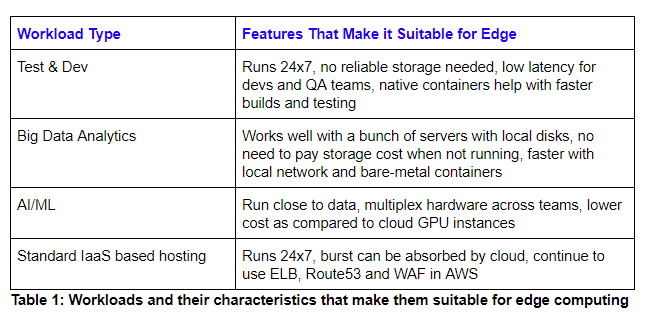While it is not possible to compete with a public cloud in terms of feature set, elasticity, scale, managed services, geographic reach and bursty workloads, there are cases where it makes sense to run part of the workloads in an on-premises environment. AWS recognizes the potential benefits of a hybrid requirement as detailed on their edge offering using AWS technologies called AWS Outposts (https://aws.amazon.com/outposts/). Microsoft with Azure stack has similar offerings where they provide an edge deployment using hardware and software managed by them.
In the context of this blog, we will refer to AWS Outpost synonymous to Azure stack
The key advantages of AWS Outposts vs the traditional on premise IT deployments are:
- The availability of application centric AWS platform services like container management, big data analytics, single management interface for application deployment, monitoring and logging. See https://aws.amazon.com/outposts/features/ for example
- An access policy model to enable use of the rest of the platform services from cloud like S3, Dynamo, SQS, Lambda, Azure Storage, AD and so on.
- A unified approach to automation and security of infrastructure in cloud and on-premise, thus enabling elasticity of workloads.
As enterprises continue their journey to cloud, they also learn some lessons in terms of variable costs that come with the pay-as-you-go model. For example, in public cloud, you pay for compute, storage, data transfer, API calls, number of requests, IOPS. So it gets hard to predict the cost and eliminate some of these variable expenses that are workload dependent. In addition, some workloads inherently are better suited to running on-premises using an Outpost like deployment.
#edge-computing #aws #hybrid-cloud #azure #devops #cloud
